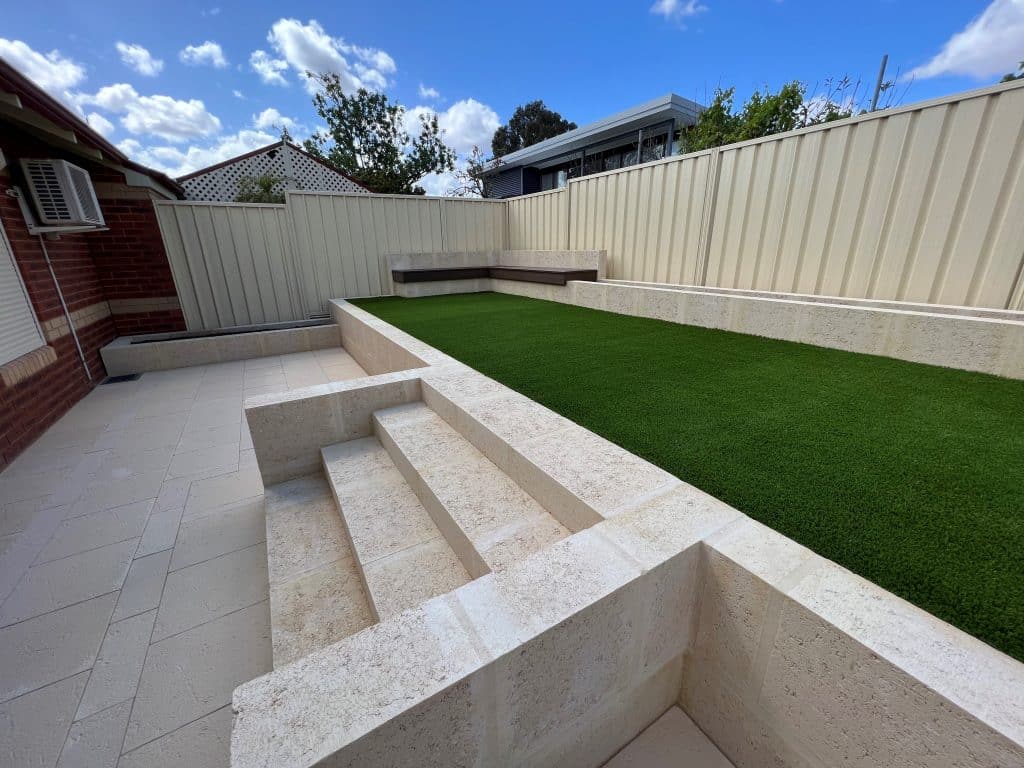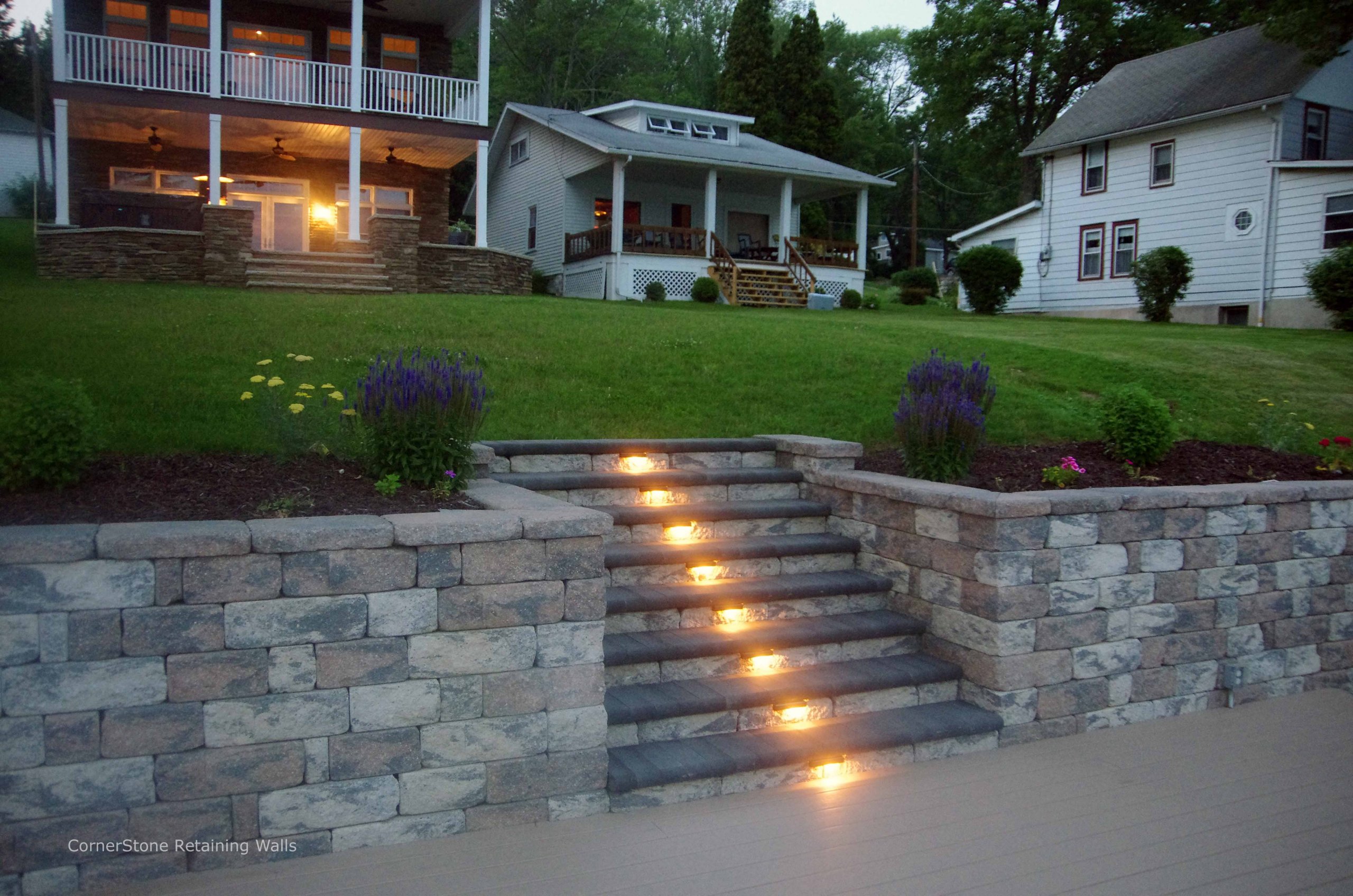The Ultimate Guide to Keeping Retaining Walls Sunshine Coast
The Ultimate Guide to Keeping Retaining Walls Sunshine Coast
Blog Article
Enhancing Home Stability: The Function of Retaining Walls in Dirt Retention and Disintegration Control
Maintaining walls stand as silent guardians, playing an essential duty in dirt retention and erosion control. By checking out the nuances of different types, design factors to consider, construction strategies, and upkeep ideas connected with maintaining wall surfaces, a much deeper understanding of their critical duty in enhancing property stability emerges.
Significance of Retaining Walls in Stability
Retaining walls play a crucial function in holding back soil, preventing erosion, and developing level surfaces in sloped locations. By providing structural assistance, maintaining walls assist to rearrange lateral pressure created by soil, protecting against landslides and slippage.
Maintaining wall surfaces are specifically essential in uneven or sloping surfaces where soil erosion is a common event. Without adequate assistance, dirt erosion can cause the degradation of landscapes, compromising the stability of frameworks and posturing threats to occupants. Retaining walls serve as barriers, maintaining the soil and preventing it from shifting downhill throughout heavy rainfall or other ecological stress factors.
Additionally, maintaining wall surfaces provide long-term advantages by decreasing upkeep costs connected with soil erosion and land instability. By purchasing well-designed maintaining walls, home owners can make sure the long life and sustainability of their landscapes while advertising a visually enticing and secure setting.

Kinds Of Retaining Walls for Erosion Control
Commonly made use of in landscape design and civil engineering jobs, different types of preserving walls work as efficient solutions for erosion control in diverse terrain problems. Gravity retaining wall surfaces are strong frameworks that depend on their weight to withstand the pressure of the dirt behind them. They appropriate for reduced to medium height applications and are usually made from concrete or stone. Cantilever preserving walls, on the other hand, are created with a thicker base and make use of a lever arm to withstand the dirt pressure. These walls are frequently utilized in locations where space is limited.
For taller wall surfaces or where area is a constraint, secured retaining walls are often utilized. These walls make use of cords or strips that are secured into the soil or rock behind the wall surface to offer added support. Another type, the sheet pile keeping wall surface, is perfect for locations with soft dirt. Retaining Walls Sunshine Coast. These wall surfaces consist of interlacing sheets that are driven right into the ground to create a barrier against dirt disintegration. When selecting the proper type of maintaining wall surface for erosion control, factors such as soil make-up, wall surface elevation, and website conditions should be meticulously considered to ensure long-lasting stability and effectiveness.
Style Considerations for Dirt Retention
When considering layout aspects for efficient dirt retention services,Incorporating the principles of architectural design and environmental sustainability is essential. When creating for dirt retention, it is vital to examine the certain needs of the website, consisting of soil make-up, water drainage patterns, and slope stability. The height and area of the retaining wall are essential factors that affect the general layout. Designers should likewise take into consideration the stress put in by the preserved dirt and prospective side loads to make certain the framework's stability in time.
In addition, the material choice for the preserving wall is important in enhancing longevity and performance. Concrete, hardwood, gabion baskets, and natural stone prevail products made use of in retaining wall surface building and construction, each with its special advantages and factors to consider. Appropriate drain mechanisms, such as weep holes and French drains, need to be see this site incorporated right into the design to protect against water build-up behind the wall, which can cause architectural failing and erosion.
Building And Construction Techniques for Keeping Wall Surfaces
When executing layout factors to consider for efficient dirt retention, the construction techniques for retaining wall surfaces play an essential function in ensuring structural stability and long-lasting stability. The success of a preserving wall surface greatly relies on the building and construction methods employed. One usual method is the gravity wall, which depends on the weight and mass of the wall itself to resist the stress of the retained dirt. Gravity walls are suitable for low to tool heights and are relatively very easy to construct. Retaining Walls Sunshine Coast.
One more widely utilized building and construction strategy is the cantilevered wall surface, which utilizes a concrete piece structure that prolongs backwards into the maintained soil. This design supplies additional stability and appropriates for tool to high keeping wall surfaces. For taller her explanation structures, enhanced soil techniques such as making use of geogrids or dirt nails can be utilized to enhance the wall's stamina and security.

Upkeep Tips for Building Stability
To ensure long-term property stability, normal upkeep practices are essential for protecting the honesty of preventing and keeping walls erosion problems. Inspecting keeping wall surfaces occasionally is essential to determine any type of indicators of damage, such as fractures, protruding, or leaning. Any kind of problems must be addressed quickly to stop additional deterioration. Cleaning the surface of the preserving wall surfaces can also help preserve their structural stability by eliminating dust, particles, and greenery that might weaken the wall gradually (Retaining Walls Sunshine Coast).
Along with visual assessments and cleansing, it is necessary to check the drainage systems connected with the maintaining wall surfaces. Making sure that drains pipes are clear of obstructions and working effectively can prevent water accumulation behind the walls, which can lead to stress and prospective failing. Correctly working drain systems are important for taking care of water circulation and reducing the danger of erosion.
On a regular basis keeping an eye on and preserving maintaining walls according to these pointers can extend their life expectancy and add to the general stability of the property.
Verdict
Finally, preserving walls play an essential role in improving residential property security by preventing soil erosion and preserving dirt in position. By making use of different sorts of keeping walls and thinking about style and building and construction techniques, homeowner can efficiently manage erosion and preserve the stability of their land. Regular maintenance of maintaining walls is vital to guarantee lasting stability and defense against erosion. Correctly built click now and kept preserving wall surfaces are crucial elements in protecting residential or commercial property security.
For taller wall surfaces or where room is a restraint, secured maintaining wall surfaces are frequently employed. These wall surfaces use wires or strips that are secured right into the soil or rock behind the wall to offer extra support. When selecting the proper type of preserving wall for erosion control, variables such as soil structure, wall surface height, and site problems have to be carefully thought about to make sure resilient security and performance.
One common technique is the gravity wall surface, which counts on the weight and mass of the wall surface itself to resist the pressure of the retained soil. Cleaning the surface area of the preserving wall surfaces can also aid maintain their architectural stability by removing dust, particles, and greenery that could weaken the wall surface over time.
Report this page